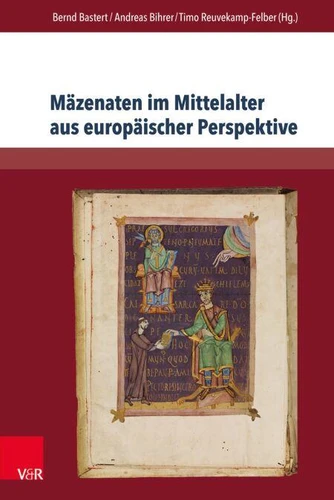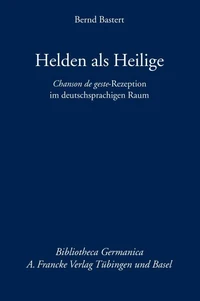Mäzenaten im Mittelalter aus europäischer Perspektive. Von historischen Akteuren zu literarischen Textkonzepten
Par : , , , ,Formats :
Disponible dans votre compte client Decitre ou Furet du Nord dès validation de votre commande. Le format PDF est :
- Compatible avec une lecture sur My Vivlio (smartphone, tablette, ordinateur)
- Compatible avec une lecture sur liseuses Vivlio
- Pour les liseuses autres que Vivlio, vous devez utiliser le logiciel Adobe Digital Edition. Non compatible avec la lecture sur les liseuses Kindle, Remarkable et Sony
 , qui est-ce ?
, qui est-ce ?Notre partenaire de plateforme de lecture numérique où vous retrouverez l'ensemble de vos ebooks gratuitement
Pour en savoir plus sur nos ebooks, consultez notre aide en ligne ici
- Nombre de pages302
- FormatPDF
- ISBN978-3-8470-0736-4
- EAN9783847007364
- Date de parution17/07/2017
- Protection num.pas de protection
- Taille7 Mo
- Infos supplémentairespdf
- ÉditeurV&R Unipress
Résumé
Den Nennungen adliger Damen und Herren in literarischen sowie bildkünstlerischen Werken des Mittelalters wurde stets ein historischer Informationswert attestiert. Die aktuelle mediävistische Forschung deutet die Gönner-Angaben jedoch vermehrt als Profilierung künstlerischer Geltungsansprüche ihrer Urheber. Hier schließt der vorliegende Band an: Er bietet erstmals einen interdisziplinären Zugang zu den Erscheinungsformen von Mäzenen in den europäischen Literaturen.
Zwölf Einzeluntersuchungen von Germanisten, Historikern, Mittellateinern, Niederlandisten, Romanisten und Kunsthistorikern nehmen die Gönnernennungen in ihrem spezifischen Spannungsfeld zwischen historischer Information und ästhetischem Konzept in den Blick. The citations of noble ladies and gentlemen in literary and artistic works of the Middle Ages were always attested with historical information value.
However, current medievalist research is increasingly interpreting the naming of benefactors in terms of profiling an artistic claim to prestige by the originators. The current volume takes this as its starting point: for the first time ever, it offers an interdisciplinary approach to the manifestations of benefactorial patrons in European literature. Twelve individual studies by German scholars, historians, Medieval Latinists, Dutch philosophers, Romanists and art historians elucidate how the naming of patrons spanned the poles between historical information and aesthetic conceptualisation.
Zwölf Einzeluntersuchungen von Germanisten, Historikern, Mittellateinern, Niederlandisten, Romanisten und Kunsthistorikern nehmen die Gönnernennungen in ihrem spezifischen Spannungsfeld zwischen historischer Information und ästhetischem Konzept in den Blick. The citations of noble ladies and gentlemen in literary and artistic works of the Middle Ages were always attested with historical information value.
However, current medievalist research is increasingly interpreting the naming of benefactors in terms of profiling an artistic claim to prestige by the originators. The current volume takes this as its starting point: for the first time ever, it offers an interdisciplinary approach to the manifestations of benefactorial patrons in European literature. Twelve individual studies by German scholars, historians, Medieval Latinists, Dutch philosophers, Romanists and art historians elucidate how the naming of patrons spanned the poles between historical information and aesthetic conceptualisation.
Den Nennungen adliger Damen und Herren in literarischen sowie bildkünstlerischen Werken des Mittelalters wurde stets ein historischer Informationswert attestiert. Die aktuelle mediävistische Forschung deutet die Gönner-Angaben jedoch vermehrt als Profilierung künstlerischer Geltungsansprüche ihrer Urheber. Hier schließt der vorliegende Band an: Er bietet erstmals einen interdisziplinären Zugang zu den Erscheinungsformen von Mäzenen in den europäischen Literaturen.
Zwölf Einzeluntersuchungen von Germanisten, Historikern, Mittellateinern, Niederlandisten, Romanisten und Kunsthistorikern nehmen die Gönnernennungen in ihrem spezifischen Spannungsfeld zwischen historischer Information und ästhetischem Konzept in den Blick. The citations of noble ladies and gentlemen in literary and artistic works of the Middle Ages were always attested with historical information value.
However, current medievalist research is increasingly interpreting the naming of benefactors in terms of profiling an artistic claim to prestige by the originators. The current volume takes this as its starting point: for the first time ever, it offers an interdisciplinary approach to the manifestations of benefactorial patrons in European literature. Twelve individual studies by German scholars, historians, Medieval Latinists, Dutch philosophers, Romanists and art historians elucidate how the naming of patrons spanned the poles between historical information and aesthetic conceptualisation.
Zwölf Einzeluntersuchungen von Germanisten, Historikern, Mittellateinern, Niederlandisten, Romanisten und Kunsthistorikern nehmen die Gönnernennungen in ihrem spezifischen Spannungsfeld zwischen historischer Information und ästhetischem Konzept in den Blick. The citations of noble ladies and gentlemen in literary and artistic works of the Middle Ages were always attested with historical information value.
However, current medievalist research is increasingly interpreting the naming of benefactors in terms of profiling an artistic claim to prestige by the originators. The current volume takes this as its starting point: for the first time ever, it offers an interdisciplinary approach to the manifestations of benefactorial patrons in European literature. Twelve individual studies by German scholars, historians, Medieval Latinists, Dutch philosophers, Romanists and art historians elucidate how the naming of patrons spanned the poles between historical information and aesthetic conceptualisation.




